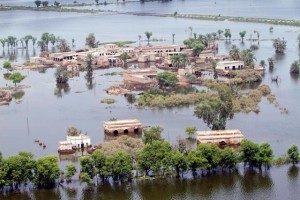Sindh still lurking in shadows after the massive rainfall and floods: Last part
Thursday, January 5th, 2012 4:40:36 by Naveed A Bari
Sindh still lurking in shadows after the massive rainfall and floods: Last part
Since food is prioritized, compromises are made on other basic needs, such as health and education. The assessment studies by various National, International, and UN agencies have identified a large number of unassisted people nationwide suffering after
the unprecedented impact of floods and massive agricultural losses. Relief Pakistan’s own assessment has also contributed in the results that show significant needs identified in the fields of food and agriculture.
Agriculture pointedly contributes to the food security and livelihoods of rural communities in Pakistan. However, flooding has deeply reduced the capacity for farming households to earn income as yields have dropped. This is exacerbated by poor quality inputs
(seeds) and lack of managed inputs (irrigated water). Overall, farming communities in poverty-stricken rural Pakistan are not practicing progressive agricultural practices that can overcome environmental conditions and advance stronger yield toward more sustainable
food security and income.
Opportunities are not extensive to promote the value of improved planting, harvest, and key crop management methodologies. Grassroots level farming households lack access to training opportunities that can build their capacity to leverage out of subsistence
and into improved. This extends into the management of livestock and their health, which often declines product values for poultry and cattle, among other impacts. Lack of veterinary health resources and awareness of veterinary health issues and simple treatments
is further depressing this important food security resource.
Although the government of Pakistan and NGOs are struggling to address the issue, the magnitude is at near emergency levels impacting poverty rates and deepening malnutrition status for the most vulnerable. According to a World Bank analysis, 52% of Pakistan’s
population lives below the national poverty line, with 36% urban population living below the poverty line. A June 2008, United Nations Inter-Agency Assessment revealed that the estimated number of households in Pakistan falling in to the severely food-insecure
category is estimated to be around 7 million.
|
|
To address the interconnected issues of flooding, low agricultural yield, poor farming skills, and food prices, the government should support subsistence farming households with improved inputs and skills training to build their capacity
for production toward improved outcomes in food security and livelihoods.
Short URL: https://www.newspakistan.pk/?p=8279

















